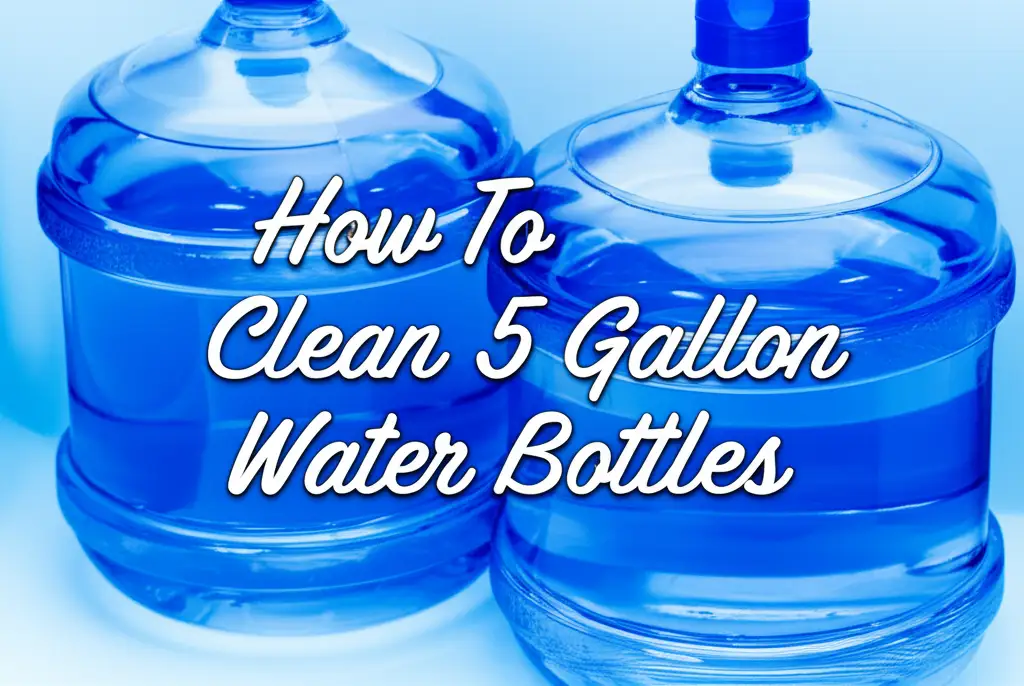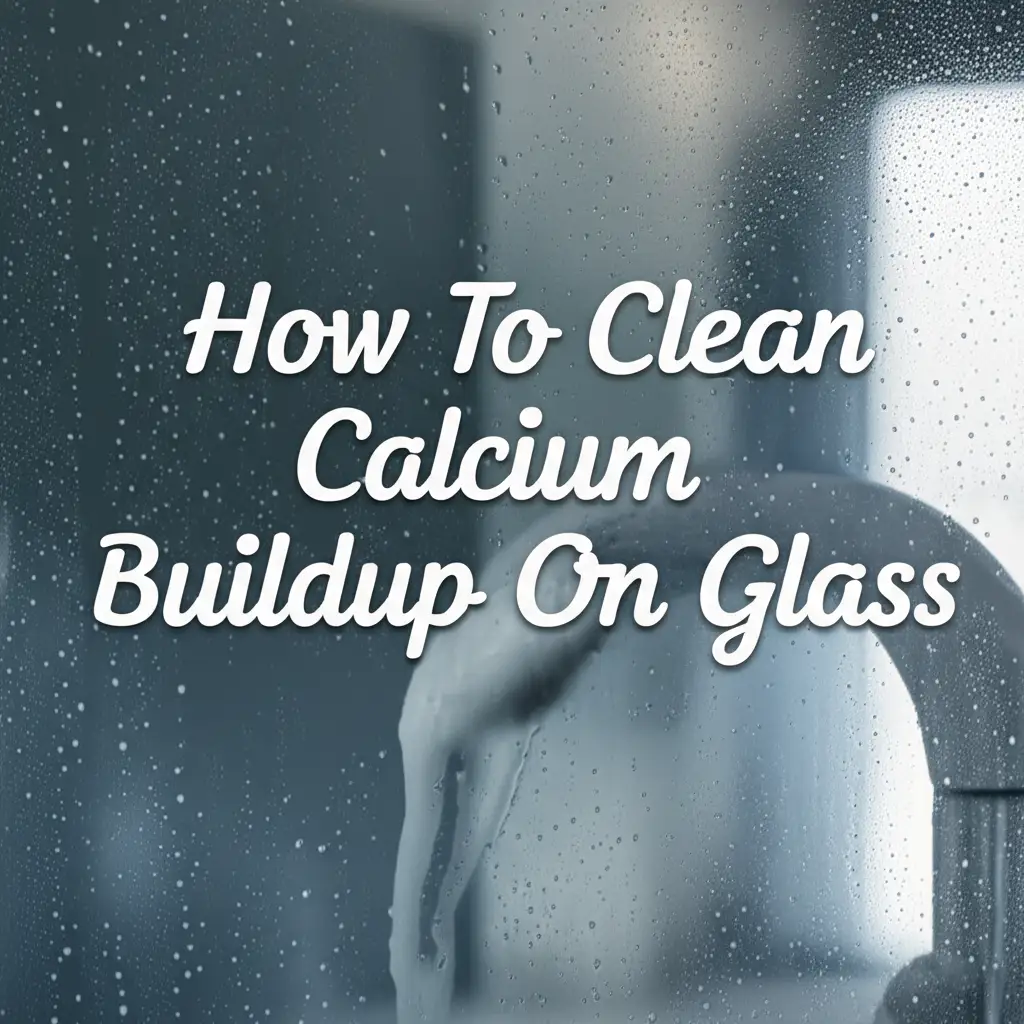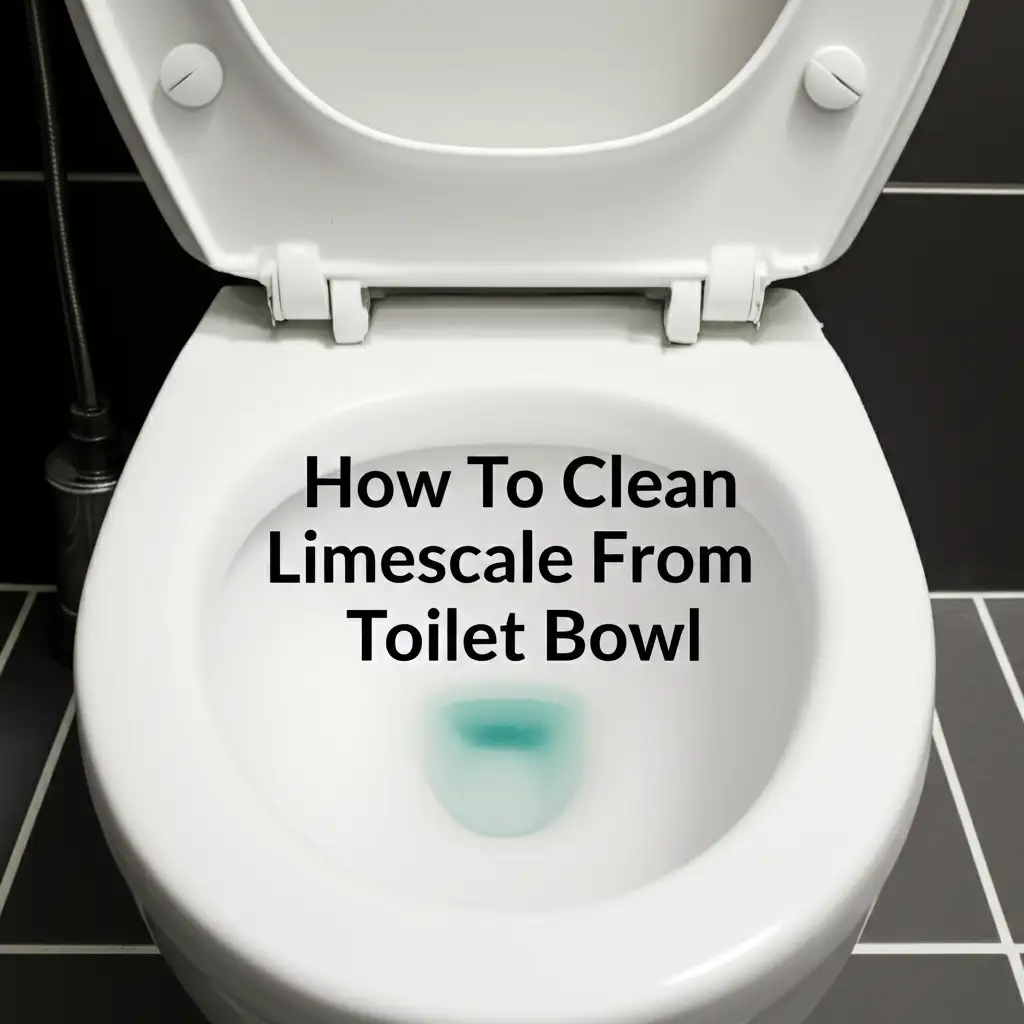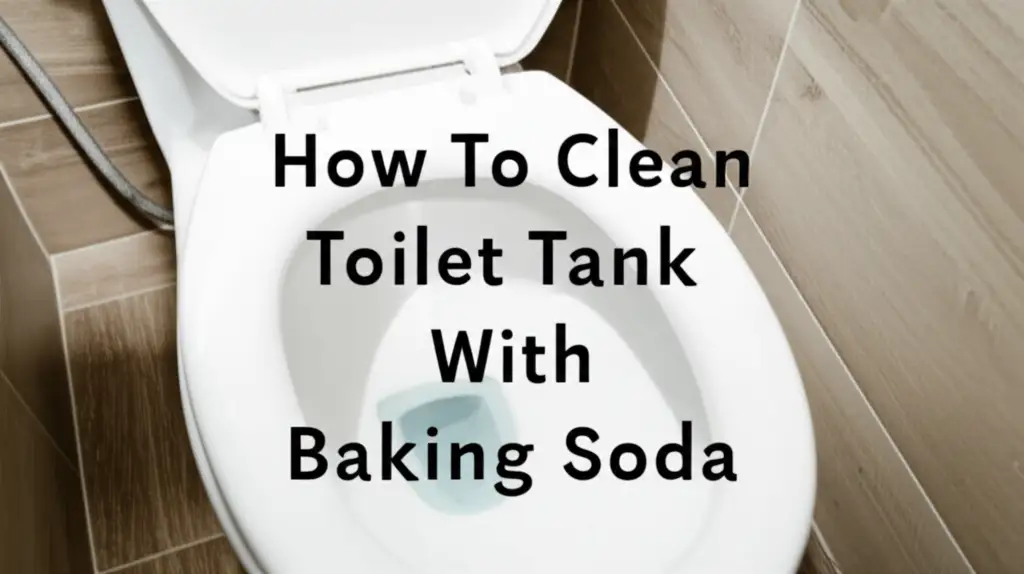· Home Cleaning · 16 min read
How To Clean 5 Gallon Water Bottles

How to Clean 5 Gallon Water Bottles: Your Guide
We all rely on those large 5-gallon water bottles for fresh, clean water at home or in the office. You fill them, empty them, and then refill them again. But have you thought about what might be growing inside? Cleaning these large bottles is important. It keeps your drinking water truly clean. Neglecting cleaning leads to buildup, bad taste, and even health risks. This guide shows you how to clean 5 gallon water bottles effectively, ensuring safe and pleasant hydration.
Takeaway
Keeping your 5-gallon water bottles clean ensures healthy hydration and prolongs bottle life.
- Regular cleaning prevents bacteria, mold, and hard water buildup.
- You can use simple household items like vinegar, bleach, or baking soda.
- Thorough rinsing and proper drying are important steps.
- Address specific issues like hard water stains and algae with targeted methods.
To effectively clean 5 gallon water bottles, first empty them. Next, choose a cleaning solution like diluted white vinegar or a mild bleach solution. Scrub the inside using a long-handled brush, rinse several times with clean water, and then air dry completely upside down.
Why Cleaning Your 5 Gallon Water Bottle Matters
Your 5-gallon water bottle works hard for you. It provides constant access to drinking water. However, over time, these bottles can become a breeding ground for unwanted substances. Water, especially if it sits for a while, encourages growth.
Bacteria and mold thrive in moist, dark environments. Even bottled water is not sterile. Small amounts of organic material or minerals can lead to growth. This growth impacts the purity of your drinking water. It can also give your water an unpleasant taste or smell. Nobody wants to drink musty water.
Mineral deposits from hard water are another common issue. These deposits appear as cloudy film or white residue. They can accumulate quickly, making your bottle look dirty. They can also affect the taste of your water. Cleaning removes these deposits. It also maintains the clarity and appearance of your bottle.
Regular cleaning also extends the life of your water bottle. Buildup can scratch or weaken the plastic over time. A clean bottle lasts longer. It gives you good quality water for many years. Think of it as caring for an important appliance.
Ignoring regular cleaning is not a good option. It compromises water quality. It can affect your health. Make cleaning a routine. It is a simple step for better health.
Gathering Your Cleaning Essentials: Tools and Solutions
Before you start cleaning your 5 gallon water bottles, gather all the items you will need. Having everything ready makes the process smoother. You probably have most of these items already in your home. These tools help you reach every part of the large bottle.
First, you will need a good bottle brush. These brushes are long and flexible. They are important for reaching the bottom and sides of the 5-gallon bottle. Make sure the brush has sturdy bristles. This helps to scrub away tough grime. Some brushes come with a sponge head. This can also be useful for gentle scrubbing.
Next, consider your cleaning solutions. White vinegar is a popular and effective choice. It is natural and good for disinfection. Vinegar also helps break down mineral deposits. You can also use a small amount of household bleach. Bleach is a strong sanitizer. It effectively kills bacteria and mold. Always dilute bleach properly. This prevents damage to the bottle. A mild dish soap is another option for general cleaning. Choose an unscented soap if possible. This prevents lingering odors in the bottle.
You will also need plenty of fresh, clean water for rinsing. A funnel can be useful. It helps pour cleaning solutions into the narrow bottle opening without spills. A large sink or bathtub is helpful too. It provides space to work and allows for easy rinsing. Having a drying rack or a clean, dry area is also necessary. This ensures the bottle dries completely.
Safety items are important. Wear rubber gloves to protect your hands from cleaning solutions. Good ventilation is also essential. Open windows or clean in a well-ventilated area. This helps disperse any fumes from bleach or strong vinegar. Prepare all your materials before you begin. This helps make the cleaning process efficient.
Step-by-Step Guide to Cleaning 5 Gallon Water Bottles
Cleaning your large water bottle might seem like a big job. But it is simple when you follow clear steps. This process ensures your bottle becomes spotless. It also makes sure your bottle is safe to use again.
Initial Rinse and Emptying
Start by emptying any remaining water from your 5-gallon bottle. Tilt the bottle to drain it completely. Then, give the bottle a quick initial rinse with warm water. This helps remove loose debris. It washes away any visible particles. This step prepares the bottle for deeper cleaning. It is like pre-washing your dishes.
Choosing Your Cleaning Solution
Now, select your cleaning solution. For general cleaning and light mineral buildup, I often use white vinegar. Fill the bottle with warm water. Add one to two cups of white vinegar. This solution works well for many cleaning needs. If you have mold or a strong odor, a bleach solution is better. Mix one teaspoon of unscented household bleach with one gallon of water. Use about five gallons of this solution for a typical bottle. Alternatively, you can use a few drops of mild, unscented dish soap. Soap helps remove oils and general dirt. Each solution has its strengths. You choose based on the bottle’s condition.
Scrubbing and Agitation
Once the cleaning solution is in, it is time to scrub. Insert your long-handled bottle brush into the opening. Reach all parts of the interior. Use the brush to scrub the bottom and sides. Pay special attention to any visible stains or slimy areas. For stubborn spots, you can also add some abrasive help. Add a handful of uncooked rice or small, clean pebbles. Shake the bottle vigorously. The rice or pebbles act as gentle scrubbers. They reach areas the brush might miss. This agitation helps dislodge grime and deposits.
Thorough Rinsing
Rinsing is a critical step. It removes all traces of the cleaning solution. You do not want any residue in your drinking water. After scrubbing, empty the cleaning solution. Rinse the bottle thoroughly with clean, warm water. Fill it completely and then empty it several times. Swirl the water around forcefully each time. You should not smell any cleaning solution. Continue rinsing until the water coming out is clear. It should also be free of any odors from the cleaning products. This step is important for your safety.
Drying and Storage
Proper drying prevents new growth. After rinsing, invert the bottle. Place it on a clean, dry surface. Let it air dry completely. You can use a bottle drying rack. Some people prop the bottle on an angle. This allows air circulation. Make sure no water droplets remain. Moisture encourages mold and bacteria. Store the dried bottle in a clean, cool, and dark place. Sunlight can promote algae growth. Keeping the bottle dry and stored well ensures it stays clean until its next use. Following these steps helps you properly clean 5 gallon water bottles.
Tackling Stubborn Issues: Hard Water Stains and Algae
Sometimes, your 5-gallon water bottle has more than just general dirt. Hard water stains and algae are common problems. They require specific attention. It is frustrating to see these in your clean water supply. But with the right methods, you can remove them.
Removing Hard Water Stains
Hard water contains minerals like calcium and magnesium. When water evaporates, these minerals leave behind white or cloudy deposits. These are hard water stains. They look unsightly in your water bottle. I find that acidic solutions work best for these.
White vinegar is an excellent choice. Fill the bottle with undiluted white vinegar. Let it sit for several hours, or even overnight. The acid in the vinegar dissolves the mineral deposits. After soaking, scrub the bottle vigorously with your bottle brush. You should see the stains start to disappear. Rinse the bottle many times with clean water. This removes all vinegar smell and residue.
For very tough stains, you can use citric acid powder. Mix a few tablespoons of citric acid powder with warm water in the bottle. Swirl it around until the powder dissolves. Let it sit for a few hours. Then scrub and rinse. Citric acid is strong. It is also a natural descaler. Both vinegar and citric acid safely remove these mineral buildups. They do not harm the plastic of your bottle. Removing hard water stains ensures your water looks clear and clean. This is similar to how you might clean hard water from a shower head. The principles of acid dissolution are very effective.
Eliminating Algae and Mold
Algae and mold are unwelcome guests in water bottles. They appear as green, black, or slimy growths. They often come from light exposure or contaminated water. If you see algae or mold, strong sanitization is necessary.
A bleach solution is effective here. Mix one teaspoon of unscented liquid household bleach with one gallon of water. Fill your 5-gallon bottle with this solution. Let it sit for at least 30 minutes, or up to an hour. The bleach kills the algae and mold spores. After soaking, empty the bottle. Scrub any remaining visible growth with your bottle brush.
Thorough rinsing is extremely important after using bleach. Rinse the bottle repeatedly with fresh, clean water. Fill it, swirl the water, and empty it. Repeat this process at least 5-7 times. You must eliminate all bleach residue and smell. Any lingering bleach can affect your water’s taste. It can also pose health risks. Make sure the bottle is completely dry before refilling. Proper drying helps prevent future mold growth. Addressing these stubborn issues makes your bottle truly clean and safe.
Natural Cleaning Solutions for Your 5 Gallon Jugs
Many people prefer to use natural cleaning solutions. They are often safer for your health and the environment. These options are effective for cleaning your 5 gallon water bottles. They avoid harsh chemicals. You probably have these ingredients in your kitchen already.
Vinegar Power
White vinegar is a cleaning powerhouse. It is a mild acid. This means it dissolves mineral deposits. It also acts as a natural disinfectant. It helps kill many types of bacteria and mold. I use white vinegar often for my household cleaning. It is especially good for water-related tasks.
To use vinegar for your 5-gallon bottle, fill it with a solution. Mix one part white vinegar with two parts warm water. For example, use 1.5-2 gallons of vinegar and fill the rest with water. Let the solution sit in the bottle for several hours. Overnight is even better. The longer it sits, the more it can work on buildup. After soaking, use your bottle brush. Scrub the interior thoroughly. The vinegar loosens grime. Rinse the bottle multiple times with clean water. Continue rinsing until the vinegar smell is gone. This method leaves your bottle clean and fresh. Many cleaning tasks benefit from a vinegar and baking soda combination.
Baking Soda Brilliance
Baking soda is another versatile natural cleaner. It is a mild abrasive. This helps scrub away grime without scratching surfaces. It is also excellent at absorbing odors. If your bottle smells stale, baking soda can help.
To clean with baking soda, make a paste. Mix about half a cup of baking soda with a small amount of warm water. Create a thick slurry. Pour this into your 5-gallon bottle. Add some warm water to the bottle, about a gallon or two. Then, use your bottle brush to scrub the inside. The baking soda paste helps to scour the surfaces. It removes film and odors. You can also add some baking soda directly to the water in the bottle and shake it well. This creates a gentle scrubbing action. Rinse the bottle thoroughly afterwards. Ensure no baking soda residue remains. This ensures clean, odor-free water.
Lemon Juice Freshness
Lemon juice is a natural acid. It has mild bleaching properties. It is also good for fighting odors. For light stains or general freshening, lemon juice works well. It leaves a pleasant, clean scent.
Squeeze the juice from several lemons into your 5-gallon bottle. You can also add lemon slices. Fill the rest of the bottle with warm water. Let this mixture sit for a few hours. The acidity helps to break down light mineral deposits. It also neutralizes odors. After soaking, scrub the bottle. Then rinse it thoroughly with clean water. Lemon juice is a gentle option. It is great for regular maintenance cleaning. These natural solutions provide effective and safe ways to keep your 5-gallon bottles clean.
Maintaining Bottle Cleanliness: Prevention is Key
Cleaning your 5-gallon water bottle is important. But prevention plays a bigger role. Good habits reduce how often you need deep cleaning. They also keep your water tasting fresh consistently. It is about stopping problems before they start.
First, always use good quality water. Water with fewer minerals causes less buildup. If your tap water is very hard, consider a filter. This can reduce the mineral content. This helps prevent hard water stains in your bottle. Filtered water also tastes better.
Second, empty and rinse your bottle often. Do not let water sit in an empty bottle for too long. Residual moisture encourages mold and bacteria. After you empty a bottle, rinse it with warm water. Then let it air dry completely. This quick rinse prevents the initial formation of slime or film. This practice is similar to keeping any large water container clean, like how you might clean a fresh water tank in an RV. Regular flushing and drying are important.
Third, store your bottles properly. Keep them in a cool, dark place. Direct sunlight promotes algae growth. Algae needs light to grow. A shaded spot prevents this green film from forming. Avoid storing bottles near heat sources. Heat can also promote bacterial growth. A pantry or basement corner is ideal.
Fourth, consider rotating your bottles. If you have several 5-gallon bottles, use them in a rotation. This prevents any single bottle from sitting unused for too long. It also allows you to clean them on a schedule. A consistent cleaning schedule helps. Plan to clean bottles every few weeks or once a month. This depends on your usage.
Lastly, make sure your water cooler or dispenser is clean. The nozzle or spigot can harbor germs. If the dispenser is dirty, it can recontaminate your clean bottle. Clean the dispenser regularly. Use a sanitizing wipe or solution. Maintaining the entire system is important. These preventative measures save you time and effort. They ensure your water is always clean and refreshing.
Safety First: Precautions When Cleaning Large Water Bottles
When cleaning your 5-gallon water bottles, safety is important. These are large containers. You are often using cleaning agents. Following safety steps protects you. It also protects your bottle.
First, always ensure good ventilation. If you use bleach or strong vinegar, fumes can build up. Work in a well-ventilated area. Open windows and doors. This helps fresh air circulate. It prevents you from inhaling strong odors. This is a general rule for cleaning with chemicals. For example, when you clean a hot water heater with vinegar, good ventilation is always key.
Second, wear protective gear. Rubber gloves are a must. They protect your skin from cleaning solutions. Bleach can irritate skin. Strong vinegar can also dry it out. Safety glasses can also be a good idea. This protects your eyes from splashes. Splashes can happen easily when handling large volumes of liquid.
Third, dilute cleaning solutions properly. Never use undiluted bleach directly in your bottle. This can damage the plastic over time. It also creates very strong fumes. Always follow the recommended dilution ratios. For bleach, it is typically one teaspoon per gallon of water. Using too much bleach is not safer. It just creates more risk.
Fourth, avoid mixing cleaning products. Never mix bleach with other cleaners, especially ammonia. This creates dangerous toxic fumes. Only use one type of cleaning agent at a time. If you switch from bleach to vinegar, rinse the bottle completely first. Ensure no residue from the previous cleaner remains.
Fifth, handle the bottle carefully. A 5-gallon bottle is heavy when full of water. It is also awkward to move when empty and wet. Be careful not to drop it. Dropping it can cause injury. It can also break or crack the bottle. Get help if you need to lift or move a full bottle.
Finally, rinse thoroughly. This step is critical for safety. Any residual cleaning solution can contaminate your drinking water. It can also harm your health. Rinse the bottle many times with clean water. Check for any lingering smells. If you smell the cleaner, rinse again. Your safety and health depend on it.
FAQ Section
How often should I clean my 5-gallon water bottle?
You should clean your 5-gallon water bottle at least once a month. If you notice any film, cloudiness, or off-taste, clean it sooner. Regular usage or exposure to sunlight may require more frequent cleaning. Always clean it immediately if you see mold or algae.
Can I use dish soap to clean my water bottle?
Yes, you can use mild, unscented dish soap. It is good for general dirt and grime. However, dish soap does not sanitize as effectively as bleach or vinegar. Always rinse thoroughly to avoid soap residue, which can affect water taste.
What if my bottle has a strong odor after cleaning?
A strong odor often means cleaning solution residue or remaining buildup. Rinse the bottle repeatedly with fresh water. You can also try a baking soda paste. Leave the paste in the bottle for a few hours. Then, rinse it very thoroughly again. Air dry the bottle completely in a well-ventilated area.
Is it safe to use bleach? How much?
Yes, bleach is safe when used correctly. Use unscented household bleach. Dilute it at a ratio of one teaspoon of bleach per gallon of water. Let it sit for 30 minutes, then rinse at least 5-7 times. Ensure good ventilation. Never mix bleach with other cleaners.
How do I dry a 5-gallon water bottle completely?
After rinsing, invert the bottle completely. Place it on a clean surface or a drying rack. Allow air to circulate inside. It is important to let it air dry completely. Do not seal the bottle until it is dry. Any remaining moisture can cause new growth.
Can I put my 5-gallon bottle in the dishwasher?
Most 5-gallon water bottles are not dishwasher safe. The high heat of a dishwasher can warp or damage the plastic. It is best to clean them by hand. Manual cleaning allows you to control the water temperature and scrubbing.
Conclusion
Keeping your 5-gallon water bottles clean is a simple step. It ensures healthy hydration for you and your family. We have covered why cleaning matters, what tools you need, and a step-by-step process. You now know how to tackle hard water stains and eliminate algae. You also have options for natural cleaning. Preventing future issues is also important. Always prioritize safety during the cleaning process.
A clean bottle provides fresh-tasting water. It extends the life of your bottle. By following these guidelines, you ensure your water source remains pure. Start cleaning your 5 gallon water bottles today. Enjoy the peace of mind that comes with truly clean, refreshing water. Make bottle cleaning a regular part of your household routine. Your health will thank you.
- water bottle cleaning
- 5 gallon bottle
- home cleaning
- sanitizing
- water cooler
- hard water stains
- algae removal
- DIY cleaning




